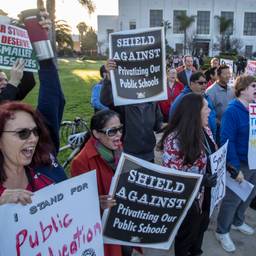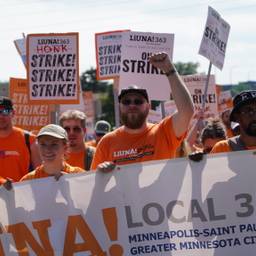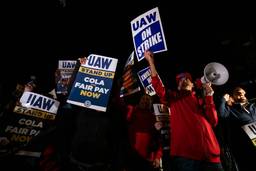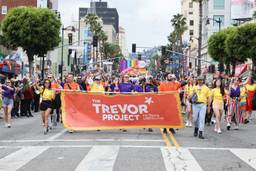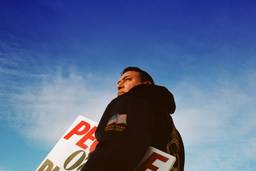Los Angeles Teachers’ Road to Durable Power, 2014–2016
United Teachers Los Angeles’ transformation into a strike-ready, progressive union offers lessons for how today’s labor upsurge can produce durable, transformative union power, writes former UTLA president Alex Caputo-Pearl.
Alex Caputo-Pearl
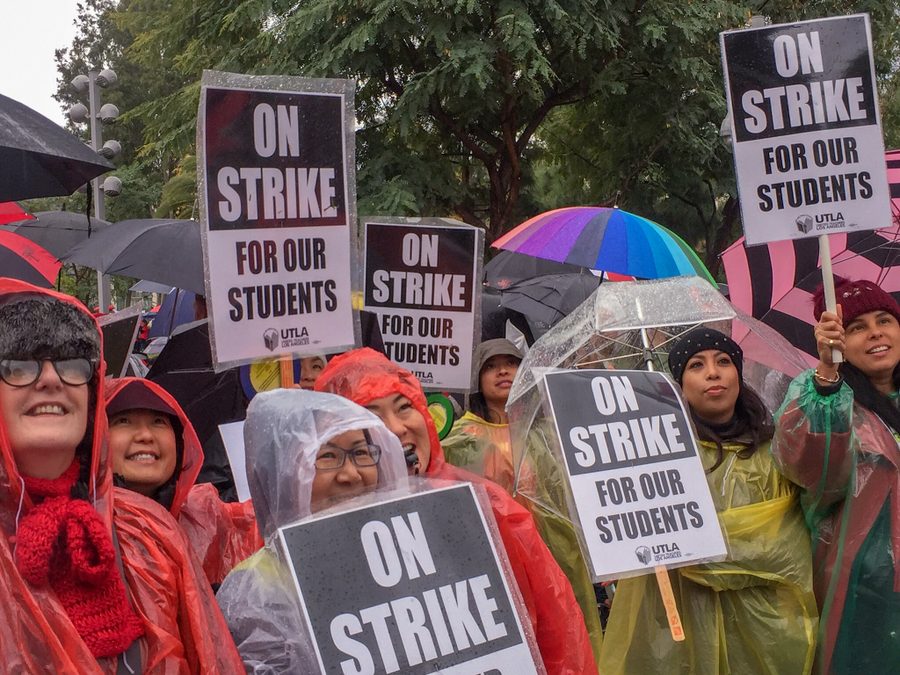
This story was first published by Jacobin and Convergence magazine.
From the 1990s to the mid-2010s, the dominant forces within the Democratic Party helped create, shape, and drive bipartisan neoliberalism in public education. Bill Clinton, Barack Obama, Arne Duncan, Michelle Rhee, a variety of billionaires, and others promoted a model based on austerity, market-based carrots and sticks, attacks on teachers’ unions, and unregulated growth of charter schools that undermined traditional public schools. These policies reinforced historic racial and class-based inequities in schools and demonized educators themselves.
Fast forward to 2019, when House Democrats proposed cuts to federal funding for charter schools, and the party began constructing a 2020 platform that would, for the first time, call for guardrails, accountability, and transparency for charters. At United Teachers Los Angeles’ (UTLA) leadership conference following its historic 99.9 percent – participation strike in January 2019, US presidential candidate Bernie Sanders signed on to support the pro – public education coalition California Calls’ statewide referendum to close corporate tax loopholes, Schools and Communities First (SCF). SCF challenged the iconic national symbol of austerity and the “third rail” of California politics, Proposition 13, which passed in 1978; by severely limiting property taxes, the measure starved public services in California. Presidential candidates Joe Biden, Kamala Harris, Elizabeth Warren, and Cory Booker followed suit and endorsed SCF.
These actions reflected a shift in the Democratic Party — not complete, but significant. This shift was caused by long-term organizing — including the national Red for Ed educator upsurge that began in Chicago in 2010, “red” and “blue” state mass uprisings among educators in 2018 and 2019, expanded educational justice community organizing, the organizing around Sanders’s campaigns for President, and UTLA and other local and state unions’ long-term power-building trajectories. The shift within the Democratic Party is remarkable, and it is a product of organizing by educators and the communities they serve.
In 2014, a new elected leadership in UTLA, coming out of years of rank-and-file caucus organizing and long-term connections with Chicago’s Caucus of Rank-and-File Educators (CORE), initiated a transformation process within the union. Ten years later, as the process continues under Cecily Myart-Cruz’s presidency, UTLA is one of the strongest local unions in the country.
UTLA’s transformation story surfaces critical lessons that respond to the most important question facing the labor movement today: How do we ensure that the recent years of labor upsurge across economic sectors become durable, transformative power?
This question is foundational to the most important objective right now: to defeat the evolving fascism of Donald Trump and the far-right forces around him. It is equally foundational to the ongoing fight against neoliberalism and imperialism in the Democratic Party. Different organizations are engaging these fights with different approaches. Across these approaches, all of us — in unions, community groups, and independent political organizations — must challenge ourselves to build long-lasting power.
This article is the first in a series that Convergence and Jacobin will copublish; it describes the first six years of UTLA’s transformation, 2014 – 2020. While the details of organizing change with the context, the key lessons from UTLA apply across political and geographic terrain, to different labor sectors and community organizations, and for both elected leaders and the rank and file.
UTLA represents over thirty-seven thousand workers in the Los Angeles Unified School District (LAUSD) and in charter schools within the district’s boundaries. LAUSD serves over a half million students across 925 school sites. Over 90 percent of students come from communities of color, and over 85 percent from low-income families. UTLA is what’s called a “merged local,” affiliated with both major national teachers’ unions, the American Federation of Teachers (AFT) and National Education Association (NEA), as well as those two unions’ statewide affiliates, the California Federation of Teachers (CFT) and the California Teachers Association (CTA).
This initial article in the series focuses on our first year and a half in office, from mid-2014 to early 2016. In this period, we proactively set foundations for longer-term transformation by building aggressive campaigns on immediate issues. Elements covered in this article will be returned to later in the series, with more detail and discussions of their trajectory through 2020.
Organizational transformation and power-building are difficult. Readers who are organizers of various stripes may see similarities between their own work and the stories described here. They may also see that their work is at a different stage, or moving at a different pace, than the stories described here. This is appropriate, as we all must move methodically and based on time, place, and conditions.
Yet it is urgent we have this conversation and help each other build from where we are. With many unions, community groups, and political organizations building electoral, issue-based, and negotiation campaigns in this moment and into the next years, our central question must be, “How do we build power that is durable and transformative?”
In a 2014 internal union election, Union Power caucus members won all the citywide officer positions in UTLA: Cecily Myart-Cruz as NEA vice president, Betty Forrester as AFT vice president, Juan Ramirez as elementary vice president, Colleen Schwab as secondary vice president, Arlene Inouye as treasurer, Daniel Barnhart as secretary, and myself as president. (The NEA and AFT vice president positions are a product of UTLA being a merged local belonging to both national unions.) Our successful internal election campaign was based on decades of caucus and racial justice community organizing, and on systematic discussions with rank-and-file educators across the city. It drew on the power of a 2013 internal referendum, brought to all members by the caucus, that passed with 70 percent support for UTLA to restructure to fight for “The Schools LA Students Deserve.” Critically, Union Power won over half the union’s board of directors seats.
The work of Union Power and its predecessor caucuses was essential to UTLA’s transformation. The caucus had a multidimensional role over many years, including (a) being a space for recruiting rank-and-file members, supporting them to learn, organize reading groups, develop leadership skills, and take action within the union; (b) pushing union leadership both when the caucus was not in elected leadership and when it was; © organizing to win elected leadership; and (d) when in leadership, taking governing power seriously, through organizing to win crucial internal votes, contributing to making hard strategic decisions, and moving the union program on the ground.
Coming into office in 2014, we knew that UTLA had a proud and righteous history — a founding strike in 1970, another strike in 1989, and countless powerful leaders who built the organization over time. Yet by 2014, UTLA was a battered and disoriented organization. LA schools were characterized by racial and social injustice, intensely segregated and underresourced. Yet the union was not leading on educational justice. Privatizers dominated the School Board and state political structure, with Los Angeles the national epicenter of the corporate charter movement.
UTLA was a low-participation union, with occasional rallies of hundreds out of tens of thousands of members. Swaths of membership had no elected building representatives. Community groups and media attacked UTLA. Recent union leaderships maintained an individual-focused and service-dominated model, overly relying on individual bureaucratic grievances rather than on collective organizing. Most members were demoralized, with a contract that had been expired for three years, no pay increases in seven years, and experiences with union leaderships that often made decisions unilaterally. Critically, the union was also on the verge of bankruptcy. A membership-wide dues increase referendum promoted by leadership in 2008 lost 30 percent to 70 percent.
We came into office knowing that we needed to build a union model based on organizing. We drew from Jane McAlevey and others from the same organizing tradition, who influenced us deeply. Organizing, or in this case majority or supermajority organizing, attempts to engage every worker in the bargaining unit, crucially including workers who have not previously been active and those who have refused to be — even so-called anti-union workers. The goal, founded upon democratic principles, is to listen to the disengaged or those who have historically refused, identify their issues, interweave their priorities and the union program, and explicitly ask them to join campaigns, thus moving all workers into the active, fighting base.
Emanating from that core principle, this model of organizing prioritizes careful power analysis, organizing with the community outside the workplace, and initiating coalitions, thereby building the power to win.
From mid-2014 through early 2016, the Union Power leadership, working with broad layers of members committed to revitalizing the union, led with ten approaches and a capstone Build the Future Fund the Fight (BFFF) campaign to lay the foundations for a durable, organizing union.
1. As soon as we came into union office in July 2014, we brought the elected forty-seven-member UTLA board of directors into leadership of organizational transformation and strategic planning.
We placed worksite-by-worksite wall charts in the board room and supported board members to systematically organize regions, with the critical support of staff. We formed broad member committees to hire new organizing staff. We initiated annual strategic planning. Year one’s plan grew from the Schools LA Students Deserve platform from the 2013 all-member vote.
The plan included a vision forward on pay, health care, working conditions, racial and social justice, and privatization. Year one’s campaign goals were to win a contract, protect health care, force the privatizer superintendent to resign, win the four School Board races, begin building a new labor/community coalition, and begin restructuring UTLA.
2. We created new job expectations for union staff.
We gave staff area representatives — staff commonly referred to as union representatives, with responsibilities for contract enforcement and organizing — clear turf and jobs. Our expectation was that each representative would support member and nonmember organizing, contract enforcement, political work, and community engagement. We initiated a learning culture with officers, board, and staff organizing together.
We parted ways with some director-level staff and consultants. We provided supports for staff to succeed and saw some veteran staff adapt and provide incredible leadership. We also knew that other staff would reject the organizing model and depart. Skilled organizers from across the country began applying to work at UTLA, and some rank-and-file members committed to organizing became interested in staff jobs. When some board members and staff fought against the restructuring and launched unprincipled attacks against new organizing directors, the Union Power board majority and others stood in support of the program and against the attacks.
3. We dialogued with and learned the priorities of tens of thousands of workers.
We immediately launched a bargaining survey process anchored by worksite meetings facilitated by elected building leaders. While organizing and data structures were still weak at this early point, priorities emerged from hundreds of meetings covering thousands of workers. Officers, board, and staff systematically visited hundreds of sites, dialoguing with members and discussing strategy.
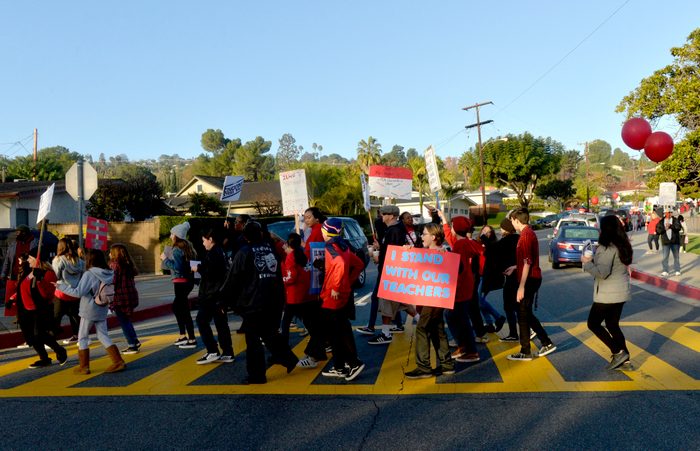
4. We worked with state and national teacher union affiliates to bring resources to the organizing model in which supermajority power is the goal; elected leaders lead with support from staff with strategic expertise; and citywide leaders, building leaders, and staff work together to identify, support, and develop member leaders, with specific attention to women, black, Latino, Asian, Native American, and LGBTQ workers.
Given UTLA’s financial crisis, and the state and national union leaderships’ openness to us, we developed a partnership agreement with the state and national organizations to which we belonged — AFT, CFT, CTA, and NEA. This agreement temporarily funded positions new to UTLA or not having been at UTLA for decades: an executive director, organizing director, research and analytics director, political director, and parent/community organizer. The UTLA board engaged a thorough process of hiring for these positions.
Soon after, with hotly contested but majority board votes, we added regional organizers, staff who worked with UTLA members at charter schools and organized nonunion educators, and a representation coordinator, who sharply cut the immense and counterproductive grievance load and injected organizing into contract enforcement.
Through a combination of the leadership’s vision, the funding of the partnership agreement, key veteran staff embracing the model, and new organizers arriving, a dynamic campaign and organizing staff took shape, including but not limited to Jeff Good, Brian McNamara, Grace Regullano, Anna Bakalis, Oraiu Amoni, Cami George, Jollene Levid, Carl Joseph, Bruce Williams, Kim Turner, Carolina Barreiro, and Esperanza Martinez. The deeply collaborative work of elected leaders, member leaders, and staff was essential to building democratic structures and practices. It also demonstrated a counterpoint to arguments from some currents within labor, which incorrectly counterpose members to staff and democracy to systematic organizing.
5. We refined our organizing model through actual campaigns, in which we (a) defined the union as the vehicle through which workers act collectively to force the employer to do what we want; (b) used escalating actions to pressure the employer, activate growing numbers of workers, and test building leaders; © used structure tests toward supermajority action; and (d) integrated organizing, communications, research, and electoral work to proactively pick and frame fights while centering educators, students, and parents.
Within four months of being in leadership, in October 2014, we held mass worksite picketing; in December 2014, regional rallies with over eight thousand workers; and, in February 2015, a City Hall rally with over fifteen thousand workers and community supporters. Yet simultaneously, our action commitment card reached only 36 percent of workers. Thus, while we had successfully organized member participation and community support not seen in decades, our structure tests told us we had many gaps to fill.
6. We centered racial, gender, social, and economic justice, and began organizing a labor/community coalition.
Quickly upon coming into office, we actively supported the emerging Black Lives Matter movement and formed a racial justice task force connected to organizing. In 2015, we were active in the Labor/Community Strategy Center coalitional campaign against the LA School Police, demanding the department return weapons it obtained from the federal government. We actively supported immigrant rights organizations in the fight against Obama’s deportation policy. We brought proposals for ethnic studies and restorative practices to negotiations, laying groundwork for broader Common Good proposals in 2017.
These 2014 – 2015 proposals were part of a comprehensive negotiations package. We knew that to build member support for Common Good and racial justice proposals in current and future negotiation cycles, we had to prove that we could also win big on pay, health care, and working conditions.
We began a process to establish the labor/community coalition Reclaim Our Schools LA. We met bilaterally with over a dozen community organizations, often listening to sharp criticisms of UTLA’s behavior in past years. UCLA’s Institute for Democracy, Education, and Access convened roundtable discussions across these organizations. Four points of potential unity came into focus: racial and social justice, school funding, community schools, and opposition to privatization.
Ultimately, four organizations with reach across black, Latino, Asian, Native American, white, and cross-class communities initiated Reclaim Our Schools LA around these points: Alliance of Californians for Community Empowerment (ACCE), LA Alliance for a New Economy (LAANE), Students Deserve, and UTLA.
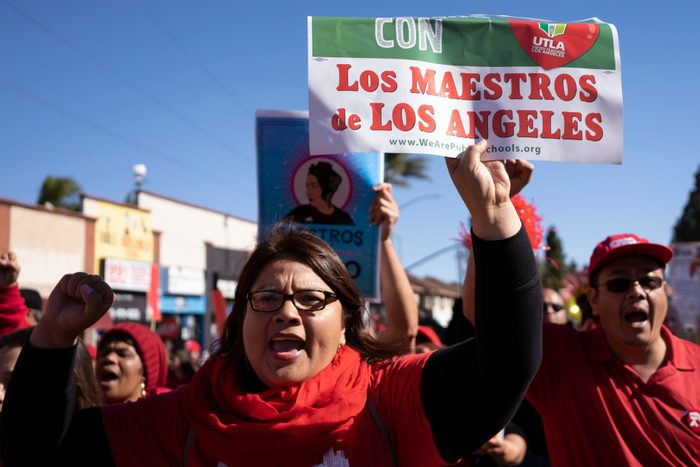
7. We started to change negotiations.
We immediately moved toward four goals: involving rank-and-file, communicating transparently, linking negotiations to organizing, and bargaining for the common good. We stopped the practice of lawyers leading negotiations and appointed organizers with bargaining experience as cochairs. We supported the board of directors to understand, make decisions on, and lead member dialogues on bargaining. We brought rank-and-file leaders onto the bargaining team. We organized the mass bargaining survey process, communicated all proposals publicly, and incorporated common good demands.
8. Knowing that to shift power dynamics in LA and win key demands, we would need to create a crisis and likely strike in the coming years, we tested withholding labor.
In Spring 2015, as part of the contract campaign, we organized systematic faculty meeting boycotts, which carried the risk of discipline for workers. For each escalating action, we trained elected building leaders in the mechanics of organizing, including using six-step organizing conversations, assessing coworkers, driving commitment petitions, doing list work, identifying leaders, reaching supermajorities, and doing postaction reflections. These risky faculty meeting boycotts drew supermajority participation, provided practice, and boosted confidence.
9. We invested in three member structures vital to building democracy and supermajority power.
We created new systems of support for and tracked the elections of rank-and-file leaders in all work spaces, across 925 buildings and groups of itinerant workers who serve many schools. With UTLA constitutionally organized into eight geographic areas, we began a multiyear process of strengthening rank-and-file leadership at these regional levels, moving toward each rank-and-file area steering committee being an elected body that could, with the support of staff, lead systematic dialogue and organizing across its respective region. And we incorporated strategy discussions and organizing trainings into each of the monthly meetings of the elected building representatives across the eight areas.
10. Knowing that to win structural change, we must organize and coordinate at broader scales, we got deeply involved with the statewide community/labor coalition fighting to increase state social spending, California Calls.
We cofounded with other locals the California Alliance for Community Schools, composed of the largest and most strategic education locals across the state. And we organized with the emerging national community/labor coalition, Alliance to Reclaim Our Schools. We embraced the importance of LA in the national and international fight against privatization: if we could beat global school privatization billionaire funder Eli Broad on his home turf in Los Angeles, we would undermine his power across the country and world.We pointed to UTLA’s partnership agreement with AFT, CFT, CTA, and NEA as a model for how the state and national unions must dramatically reprogram monies. The agreement modeled direct investment into local, strategic, mass-based, transformative organizing, rather than into the non-organizing-related conferences, events, and high-level transactional politics that too often characterize current state and national spending.
Ready to Go
Powered by these ten approaches, by Summer 2015, one year into leadership, we had forced the superintendent to resign, won impressive contract and health care agreements, supported our endorsed candidates to win three of four School Board elections, developed member structures, laid foundations for a coalition, raised member confidence and expectations, and established an unapologetic militance exemplified by the mass rally at City Hall and a Sunday morning demonstration of over a thousand at the opening of Broad’s downtown art museum. As we engaged supermajorities and integrated fights for compensation, working conditions, and racial and social justice, we saw the leadership and participation of women, black, Latino, Asian, Native American, and LGBTQ members increase dramatically.
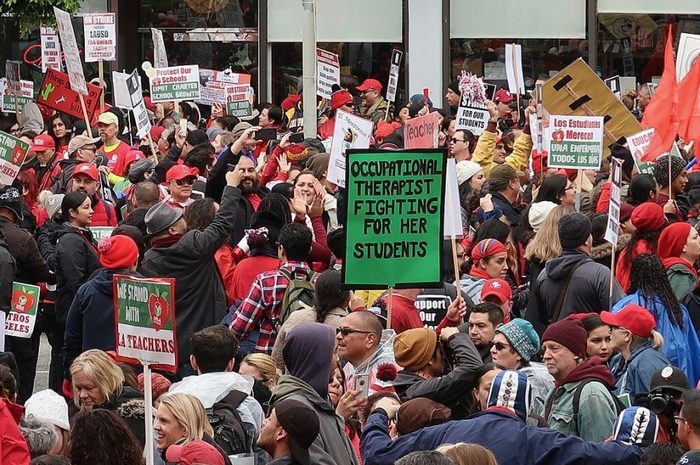
In July 2015, we launched the Build the Future Fund the Fight (BFFF) campaign to revise the UTLA constitution and increase member dues by 30 percent. UTLA had dramatically lower dues than most educator unions, had constitutional provisions that undermined the union’s long-term financial sustainability, and was operating in the shadow of the overwhelming loss in the 2008 all-member dues increase vote.
With BFFF, we further developed the organizational practices we had built in the first year:
- Needing a majority vote of thirty-five thousand members on the constitutional revision and dues increase, we again democratically organized tens of thousands of conversations. Our goal was to have a strong majority committed to voting “yes” on paper petitions before the vote occurred.
- We modeled unapologetic conversational semantics: “You and your coworkers are in a war. Billionaires and neoliberal elected officials are underfunding and privatizing schools, undermining health care, and attacking unions. Your union is woefully unprepared. BFFF will remedy that by funding these aspects of a comprehensive strategy.” We listed specifics. “Will you and your coworkers invest in yourselves and vote ‘yes’?”
- We doubled down on trainings on the essential mechanics of organizing with elected rank-and-file building representatives.
- Our research and analytics director, organizing director, and others, working with a data consultant with organizing experience, developed a unique organizing database. This included each member and nonmember’s status, worksite, political contribution, union roles, attendance at recent actions, campaign-by-campaign assessments, and more. We used this database to track strong and weak worksites, build member and staff accountability for turf, and target support.
- We doubled down on training and lifting up the organizing role of the eight rank-and-file area steering committees and leadership groups among itinerant workers. These committees used organizing data to drive work.
- We democratically built consensus. Board members discussed and developed BFFF and publicly signed on. After discussion and adjustments, area steering committees and leaders among itinerant groups publicly signed on. After discussion and adjustments, the supermajority of elected rank-and-file building leaders publicly signed on. Those building leaders used the essential mechanics of organizing to engage worker-by-worker conversations.
- We systematically began to incorporate mass political education on the role of public education in society, unions, the economy, struggle, privatization, racial and social justice, and national and international issues through site visits, area steering committee meetings, area meetings, leadership conference trainings, member leader trainings, and more.
By January 2016, we had over 55 percent of members committed on paper petitions to vote “yes,” and momentum in the buildings was generating more signatures daily. We continued organizing. In mid-February, BFFF passed with 82 percent support.
With the increased revenues from BFFF, the UTLA board invested more deeply in organizing — funding what would become thousands of additional release days for rank-and-file members to organize, be trained, and participate in negotiations and strategy discussions; paying full freight for the staff positions from the partnership agreement; hiring additional organizing, communications, and research staff; building a comprehensive media fund to proactively shape the public narrative; and allocating money annually to each of the Reclaim Our Schools LA anchor organizations to hire full-time organizers to work with parents, youth, and community.
These 2014 – early 2016 foundations powered UTLA forward through 2020 and beyond, through campaigns that will be the subject of future articles in this series: organizing mass site-based protests against MAGA in 2017, modeling how locals can go beyond attending national conferences to shape national politics; using a health care ratification vote in 2018 to drive a mass process to re-sign union membership cards that protected our member density in the face of the Supreme Court’s anti-union Janus attack; winning deep pay, health care, working conditions, racial justice, school funding, and antiprivatization victories with the 2019 strike and follow-up actions; winning additional School Board victories and taking tough School Board losses that we learned from; implementing a democratic, all-worksites process to endorse Bernie Sanders for US president in 2019, helping to shape national policy; and winning physical school closures and powerful agreements for workers and students in the first months of COVID-19.
UTLA’s work in the 2014 – 2016 period produced many important policy, contract, and campaign victories. Just as important, and perhaps more critical for the long-term transformation, were the internal and organizational processes and structures that were developed during this time. Lessons from this period can be adapted across a wide range of contexts, including electoral, negotiations-based, and issue-based campaigns that labor and community organizations are building now. With intentionality in our organizing, we can use these campaigns to not only win critical victories but also take steps to turn the current labor and community momentum into durable, transformative power.
This story was first published in Jacobin.
